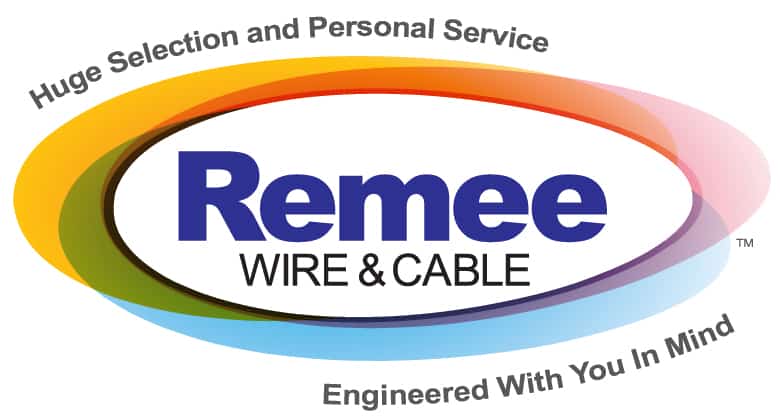In 2020, the Energy Information Agency (EIA) estimated that 20% of all the electricity generated in the US came from renewables — more than half of which was produced by wind or solar power. Add to that the expectation that renewables will exceed natural gas as the primary energy source by 2030, and the shift towards a cleaner power grid appears to be picking up steam. As this trend progresses so will the need for renewable energy cables.
Within this transition, much is often made of output factors like power production or cell efficiency, but one component often goes overlooked: transmission. Just as fossil fuel-based power plants rely on transmission lines to deliver power to end users, wind and solar farms must be equipped with the proper wiring to conduct the electricity they produce. This means that as renewables play an increasingly prominent role in meeting our electrical needs, renewable energy cables will come into even greater demand.
What Are Renewable Energy Cables?
As their name implies, renewable energy cables provide the interconnections needed to derive power from renewable energy sources. There are many components within renewable energy systems, and if the right wires or cables are not chosen to configure their subsystems correctly, a module or turbine may produce insufficient power — or may not even deliver power at all.
Wires vs. Cables
Before choosing the proper interconnections for your renewable energy system, it’s important to note the difference between a wire and a cable. Typically composed of a single or stranded conductor, wires are used for connecting individual components like a solar panel to an inverter and are more common in smaller installations. Cables, on the other hand, are made from a composite of multiple insulated wires sheathed by a protective jacket and are used to connect larger renewable energy subsystems. This gives them the following properties:
- Protection – Able to resist degradation from UV radiation or electromagnetic interference (EMI), a well-jacketed renewable energy cable should be able to stand up to the elements.
- Conductivity – Usually consisting of a single or double copper core, renewable energy cables are made from highly conductive material and are able to transmit electricity with minimal power loss.
- Size-Sensitive – When power systems are designed, the amount of electricity produced must be considered to determine the proper cable size. Incorrect sizing will result in overheating and power loss — as well as massive regulatory fees.
With so many high-performance property requirements expected for a renewable energy cable, developing one suitable for the task requires significant expertise.
What Kinds of Renewable Energy Cables Are There?
The type of renewable energy cable used depends upon both the type of energy source and subsystem component to which it is connected. Here are some renewable energy examples for both.
Renewable Energy Cables for Solar Arrays
As wires usually connect components like panels, inverters, batteries, and charge controllers, solar cables are more wide-ranging and connect more complex subsystems. A few of our renewable energy cables include:
- PV (Photovoltaic) Cable – XLPE (Cross-linked Polyethylene) insulation, 600V – 2000V, aluminum (1/0 AWG to 1000kcmil), copper (#12 AWG to 1000kcmil), stranded. UL 4703. RoHS compliant.
- Ground Wire – Bare copper (#12 AWG to 1000kcmil), meets ASTM B1, ASTM B2, ASTM B3, ASTM B8 or ASTM B33 standards. Copper clad steel (CCS 30% or 40% Conductivity; #2 AWG to 4/0 AWG), meets ASTM B193, ASTM B227, ASTM B228, ASTM B452 or ASTM B910 standards.
- Fiber Optic Cable – Single Mode, 12 to 96 fibers, RoHS compliant.
- Control / Motor Tracker Cable – Stranded copper conductor (#18 AWG to #6 AWG), CPE/PVC jacket. UL 2277. RoHS compliant.
- Harnesses – PV cable with XLPE (cross-linked polyethylene) insulation, pre-terminated in coils or on reels, cut-to-length (up to 12 strings) with choice of connectors.
The uses for these cables are quite diverse, with applications ranging from directional motor control for single or dual-axis systems, generation of transmitted power from each solar panel row to the combining box, or communication between motors and MET stations for power analysis — among many others.
Renewable Energy Cables for Wind Power
Renewable energy cables are often found in wind towers as well, especially single and multi-conductor cables, which are used for instrumentation, control, and power transmission. These are primarily housed in the nacelle and connect to the transformers within the tower.
Remee Is Your Renewable Energy Cable Provider
From the increasing demand for environmentally-friendly regulations to the international rise in power demand, the role of renewable energy in the global energy mix is only going to become more prominent. Because of that, many investments in improving the performance of renewables will continue to be made, and one essential component will always be renewable energy cables.
Whether we’re providing cables for wind towers or for commercial solar farms, Remee is an industry leader in this critical sector that makes renewables thrive. We’ve got the expertise to custom design the connections you need, so contact us today, and we’ll provide the renewable energy cables your project requires.
